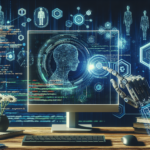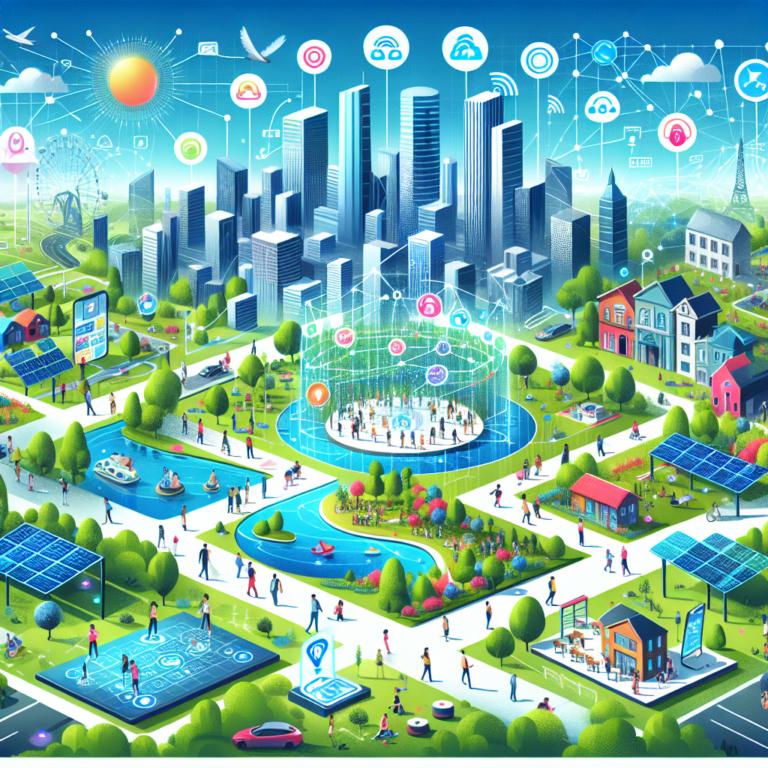Empowering Smart Cities: Bridging Technology and Community for a Sustainable Future 🌍
The Evolution of Smart Cities: Beyond Just Technology
Smart cities are more than just a buzzword in today’s urban discourse; they represent a dynamic intersection of **technology**, **community**, and sustainable urban planning. As the world races towards a future where by 2050, it is projected that **68%** of the global population will reside in urban areas, preparation and innovation are critical. Cities must evolve from simple data-collecting hubs to engaging environments that empower citizens and foster community collaboration.
Redefining Smartness: Connecting Citizens to Technology 🤝
In the evolution of smart cities, a pivotal shift is necessary. Instead of solely focusing on which cities are the forerunners in smart technologies, we must ask: **How can these technologies connect and empower citizens?** Deploying sensors and data systems is not enough; the essence of a truly smart city lies in its ability to maximize human potential.
- Crowdsourcing Data: The urban population itself can act as an intricate IoT sensor network, offering invaluable real-time data and insights.
- Investing in Individuals: Long-lasting success comes from investing in connectivity, education, and citizen engagement rather than merely hardware.
- Community Knowledge: Engaging with local residents and valuing their contributions creates a foundation for informed decision-making and policy development.
An exemplary case of harnessing human sensors is the Open Street Map project, which illustrates how individual contributions can collectively enhance urban planning and development.
Smart Cities and the Metaverse: A Digital Frontier 🚀
As we step into **Smart Cities 2.0**, the emergence of the **Metaverse** offers unprecedented opportunities to drive innovation. But what exactly is the Metaverse? It represents the next evolution of the internet, integrating technologies like VR, AR, and IoT to blur the lines between physical and digital environments.
Enhancing Urban Planning with Immersive Technologies
In the context of smart cities, the Metaverse can transform urban planning. By providing interactive simulations and visualizations, city planners can:
- Test and Simulate: Run urban development simulations to predict outcomes before implementation.
- Community Engagement: Host virtual town hall meetings where citizens can provide feedback on proposed initiatives.
- Optimize Operations: Analyze transportation systems and energy usage to improve efficiency.
As IoT-connected devices gather real-time data, they enable city officials to anticipate service needs more effectively. The Metaverse serves as a 3D user interface, crafting **digital twin cities** that permit cities to optimize resources, enhance citizen experiences, and manage urban challenges creatively.
Immersive Technology in Urban Design: Building the Future 💡
Immersive technologies such as AR (Augmented Reality), VR (Virtual Reality), and MR (Mixed Reality) can redefine urban design and the architectural process, making them more relatable and engaging for residents. However, more exploration is needed to identify **specific applications** that can be integrated into city frameworks.
Workshops and Collaborations focused on creating immersive applications can tap into the creative potentials that lie within urban contexts. Ideas generated in these settings could lead to fully immersive urban experiences, making cities more engaging, educational, and fun.
Impact on Sustainable Smart Cities 🌱
The fusion of **Building Information Modeling (BIM)** with immersive technologies is fostering momentum in eco-friendly designs and urban projects. Over the last few years, the publication frequency on immersive technologies has surged, showcasing their rising relevance in sustainable smart city development.
Key areas of impact include:
- Efficiency in Energy Use: Tools like AR can provide real-time data visualization, helping cities track energy consumption and identify savings.
- Enhanced Collaboration: By employing immersive technologies, architects, city planners, and community members can work together seamlessly.
- Sustainable Development Goals: Integrating advancements in BIM with VR/AR can directly contribute to achieving these goals, enhancing overall livability in urban spaces.
Emerging keywords such as **IoT**, **big data**, and **digitalization** point to the interdisciplinary connections that are shaping the future of sustainable urban landscapes.
The Role of Smart City Technology in Tourism 🌍✈️
Smart city technology is revolutionizing tourism, creating an enhanced experience for visitors while elevating the quality of life for residents. By implementing smart solutions, cities become more eco-friendly, secure, and comfortable, making them appealing destinations.
Smart Tourism has emerged as a competitive advantage for countries seeking to attract global travelers. The strategies employed in smart cities prioritize people, making deliberate use of data and technology to enhance urban experiences.
Key strategies include:
- Intelligent Infrastructure: Cities need to build interconnected systems that support both local populations and tourists.
- AR-driven Travel Apps: These apps provide immersive experiences, turning city exploration into an interactive adventure.
- Investment in Digital Infrastructure: Municipalities must ensure robust support systems for smart city solutions to meet the needs of a growing global tourist population.
As cities become more integrated into the smart technology landscape, the benefits extend not only to tourists but also to local communities and businesses.
The Future of Smart Cities: Collaboration is Key 🔑
As we forge ahead, the development of smart cities requires collaboration across various sectors:
- Public-Private Partnerships: Governments, tech companies, and urban planners must come together to navigate the complexities of Smart City projects.
- Attending Events: Bringing individuals together fosters collaboration and inspires actionable change within communities.
- Practical Examples: Sharing success stories and practical implementations of smart technologies can motivate others to follow suit and innovate.
Prioritizing **community involvement** and **stakeholder engagement** in developing smart solutions will enable cities to not only adapt to changes but thrive amidst them. By investing in both technology and humanity, we pave the way for cities that are resilient, sustainable, and equipped for the future.




0 Comments